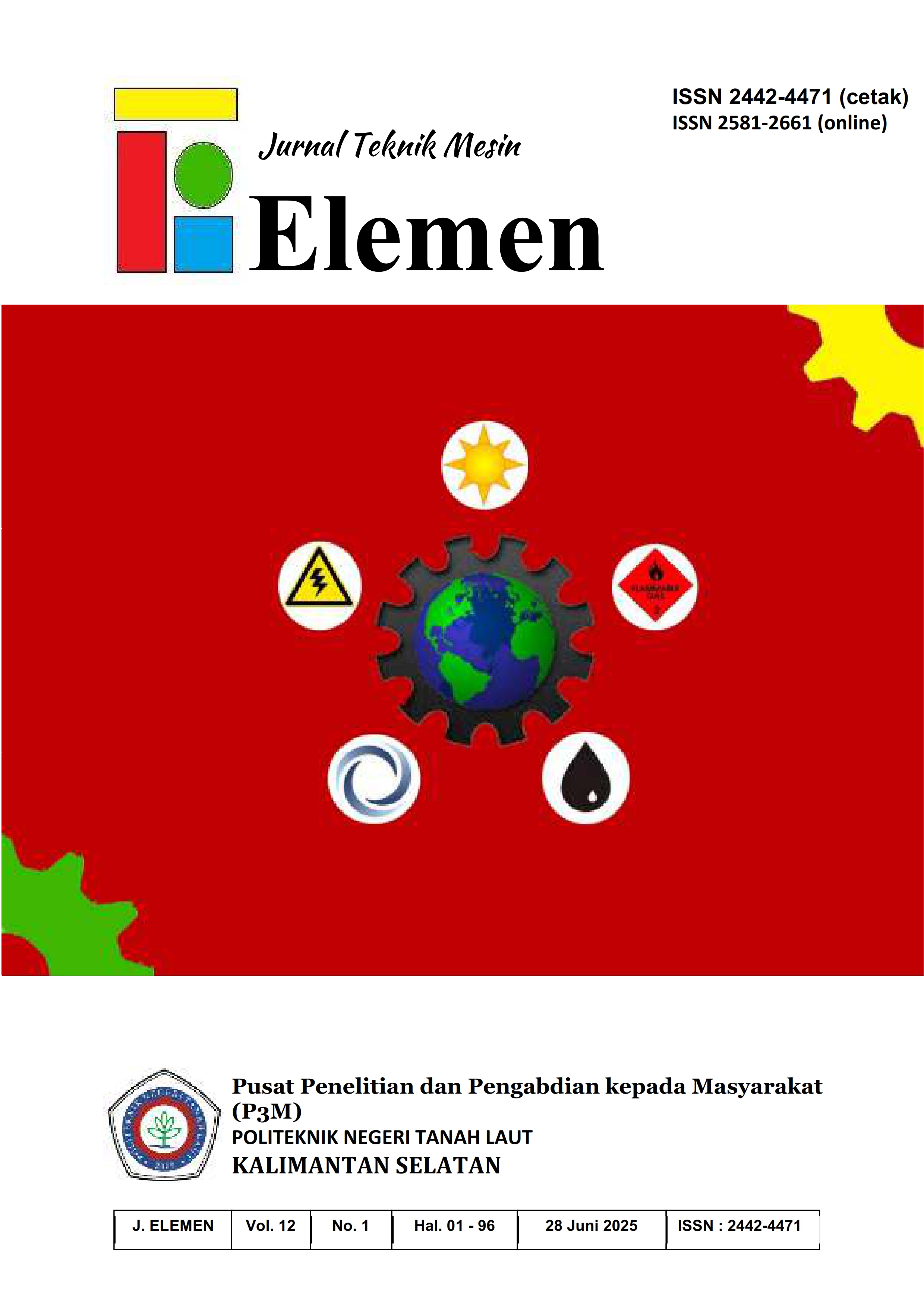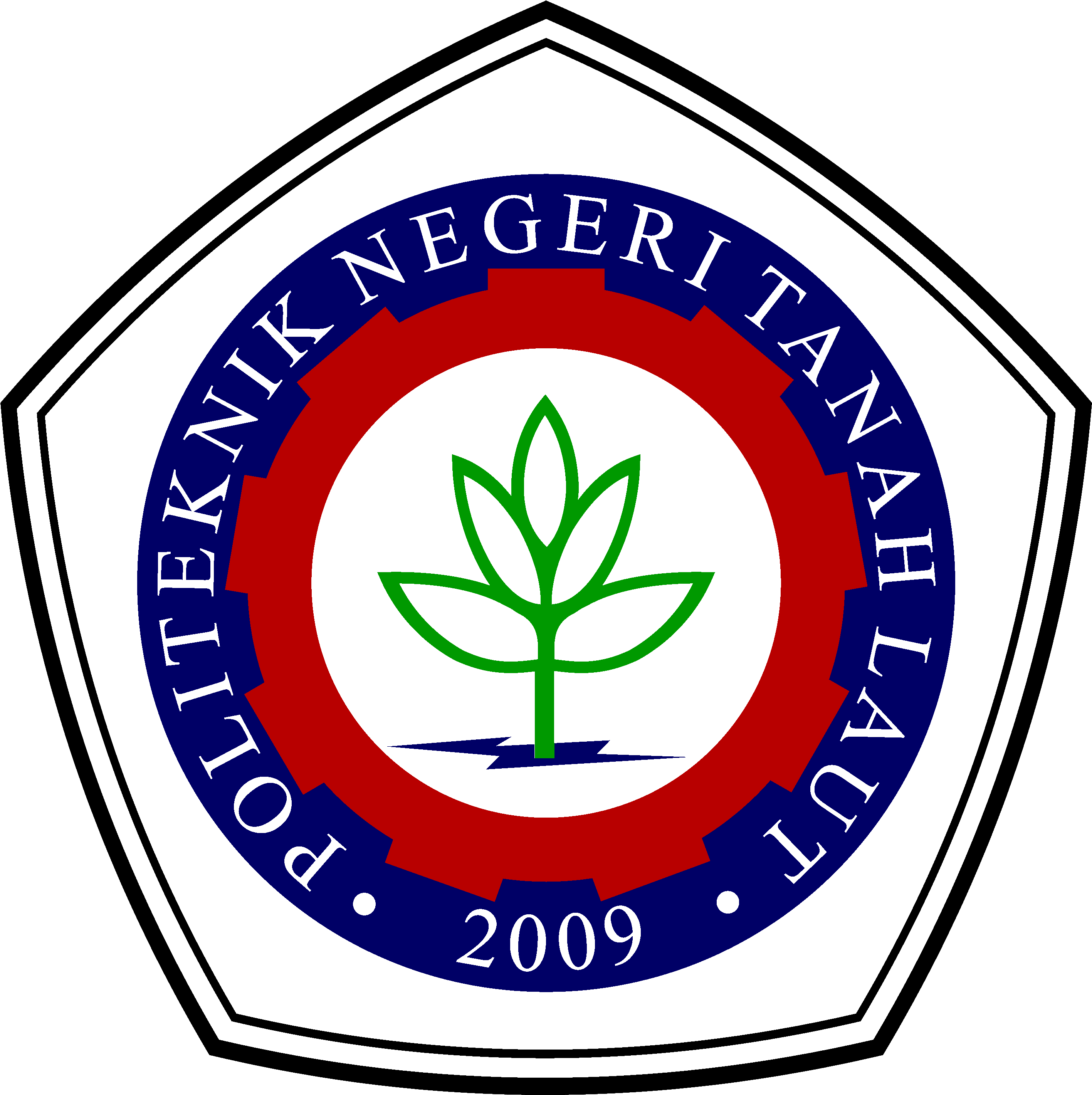THE IMPACT OF HEAT TREATMENT, WITH A PARTICULAR FOCUS ON COOLING VARIATIONS, ON THE FATIGUE AND HARDNESS CHARACTERISTICS OF ST 41 STEEL
DOI:
https://doi.org/10.34128/je.v12i1.318Keywords:
Baja ST 41, Quenching, Kekerasan, KelelahanAbstract
ST 41 steel is a low carbon steel, has a relatively low surface hardness, so it requires additional heat treatment to improve resistance to wear and cyclic loads. This study aims to examine the effect of variations in cooling media on the mechanical properties of ST 41 steel, especially hardness and fatigue resistance. The variations in cooling media used were water, SAE 20W-50 oil, and air at a temperature of 950°C with a holding time of 15 minutes. The heat treatment process includes preheating and hardening, followed by quenching using the three media. The results showed that the hardness of the steel increased significantly after heat treatment, with the highest value in water cooling (171 HV). In fatigue testing, untreated ST 41 steel showed 71,651 cycles, while heat treatment with oil, air, and water reduced the number of fatigue cycles to 30,571.67, 19,461, and 43,402.33 cycles
References
G. Gumilar, I. Abdulah, R. Suratman, and A. R. Setiawan, “Analysis of Microstructure and Hardness of Welded Joints of Dissimilar Steel of Aisi 1018 - Aisi 304,” J. Sains Mater. Indones., vol. 20, no. 4, p. 149, 2019, doi: 10.17146/jsmi.2019.20.4.5280.
M. Pita and L. Lebea, “Investigating the Effect of Cooling Media on Hardness, Toughness, Coefficient of Friction, and Wear Rate of Mild Steel Heat Treated at Different Temperatures,” Mater. Des. Process. Commun., vol. 2022, pp. 1–10, 2022, doi: 10.1155/2022/3564875.
M. Ramadan, “Interface Structure and Elements Diffusion of as-Cast and Annealed Ductile Iron/Stainless Steel Bimetal Castings,” Eng. Technol. Appl. Sci. Res., vol. 8, no. 2, pp. 2709–2714, 2018, doi: 10.48084/etasr.1856.
E. Santoso and Ismail, “Studi Eksperimental Pengaruh Perlakuan Panas Hardening Pada Baja ST-41 Terhadap Sifat Mekanik,” Mek. J. Tek. Mesin, vol. 7, no. 2, pp. 64–71, 2021.
M. Kadowaki et al., “First-Principles Investigation on Work Function of Martensitic Carbon Steels: Effect of Interstitial Carbon on Anodic Dissolution Resistance,” 2021. doi: 10.1149/1945-7111/ac3276.
A. Tridello and D. S. Paolino, “LCF‐HCF Strain–life Model: Statistical Distribution and Design Curves Based on the Maximum Likelihood Principle,” 2023. doi: 10.1111/ffe.13990.
W. Suprapto, Baja dan Aplikasinya. Universitas Brawijaya Press, 2023. [Online]. Available: https://books.google.co.id/books?id=njPuEAAAQBAJ
Z. Wani and N. Kumar, “A Review on Carburizing temperature and the mechanical behaviour of mild steel,” Dogo Rangsang Res. J., vol. 10, no. 9, pp. 115–128, 2020.
S. Sumiati, P. Purwati, and I. Nugraha, “Implementation of Value Engineering in Heat Treatment Process to Cooling Media Steel ST 41 at PT. XY,” E3s Web Conf., vol. 328, p. 7013, 2021, doi: 10.1051/e3sconf/202132807013.
C. Vellanki, S. Choudhury, D. B. Jayagopi, G. Vimson, and G. Paul, “Influence of Lubrication on the Friction and Wear Characteristics of Low Carbon Steel Under Sliding Reciprocation Conditions,” Iop Conf. Ser. Mater. Sci. Eng., 2022, doi: 10.1088/1757-899x/1248/1/012033.
L. A. Matlakhova, E. C. Pessanha, H. Alves, N. A. Palii, and S. N. Monteiro, “Temperature Effect on the Dynamic Young’s Modulus, Shear Modulus, Internal Friction, and Dilatometric Changes in Quenched and Annealed AISI4130 Steel,” 2023, doi: 10.20944/preprints202305.0861.v1.
A. Wojtacha and M. Opiela, “Numerical Simulation of the Phase Transformations in Steels: A Case Study on Newly-Developed Multi-Phase Steels for Drop Forgings,” Adv. Sci. Technol. – Res. J., vol. 15, no. 1, pp. 126–133, 2021, doi: 10.12913/22998624/130863.
A. Standard, “E8. Standard test method for tension testing of metallic materials,” West Conshohocken ASTM, 2004.
Y. Li et al., “Effects of Austenite Deformation on Continuous Cooling Transformation of the Pearlite Heat-Resistant Steel,” Ironmak. Steelmak., vol. 48, no. 4, pp. 402–408, 2020, doi: 10.1080/03019233.2020.1799699.
A. R. Khan, Y. Shi, H. Wang, and Y.-G. Jiang, “Effect of Cooling Rate on Microstructure and Mechanical Properties in the CGHAZ of Electroslag Welded Pearlitic Rail Steel,” Metals (Basel)., vol. 9, no. 7, p. 742, 2019, doi: 10.3390/met9070742.
D. Ergashev and O. Khudayberdiev, “Development of Thermocyclic Processing Modes for Carbon Steels Used on Cold Forming Tools,” E3s Web Conf., vol. 383, p. 4066, 2023, doi: 10.1051/e3sconf/202338304066.
P. T. T. Hang, “Effects of Heat Treatment Process on Mechanical Properties of Medium Carbon Steel,” 2021. doi: 10.31817/vjas.2021.4.4.07.
G. Li et al., “Study of the Catalytic Strengthening of a Vacuum Carburized Layer on Alloy Steel by Rare Earth Pre-Implantation,” 2019. doi: 10.3390/ma12203420.
Downloads
Published
How to Cite
Issue
Section
License
Copyright (c) 2025 ELEMEN : JURNAL TEKNIK MESIN

This work is licensed under a Creative Commons Attribution 4.0 International License.




